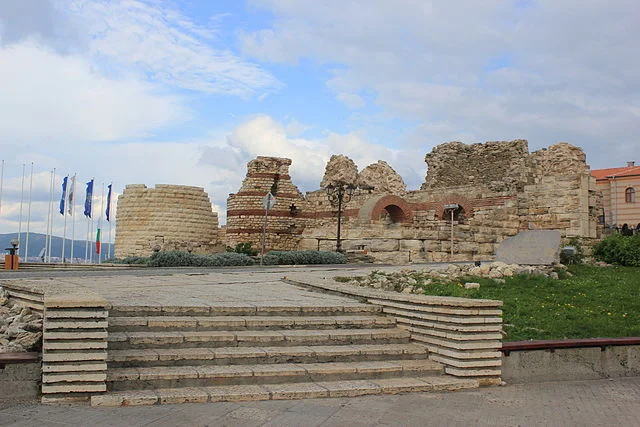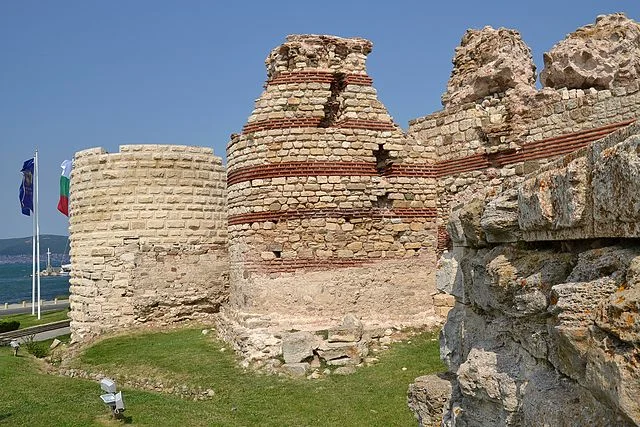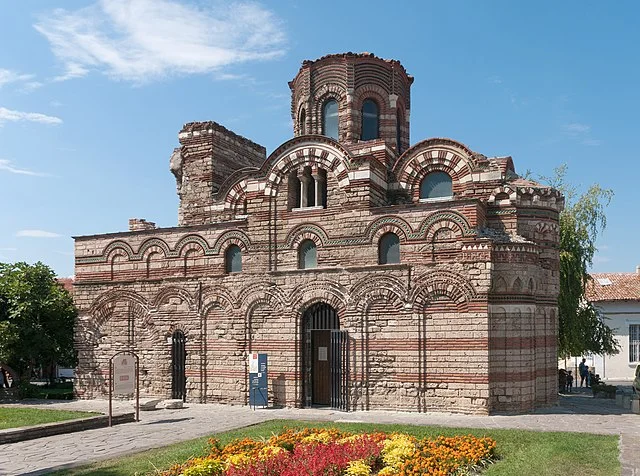The Ancient City of Nessebar, located on the Black Sea coast of Bulgaria, stands as one of the oldest continuously inhabited sites in Europe. This UNESCO World Heritage site reflects over three millennia of human occupation and cultural evolution. Known for its remarkably preserved monuments, Nessebar has passed through Thracian, Greek, Roman, Byzantine, and Ottoman influences, each leaving an indelible mark on its architecture and urban layout.
Get your dose of History via Email
Early History and Thracian Settlement (2nd Millennium BC)

The earliest records indicate that Thracian tribes settled on the small rocky peninsula where Nessebar lies, as early as the 2nd millennium BC. Archaeological findings, such as pottery and tools, confirm the region’s ancient habitation. The Thracians referred to the settlement as Menebria, a name derived from the local Thracian language.
Greek Colonization and the Formation of Mesembria (6th Century BC)

Around 510 BC, Greek settlers from Megara established a colony named Mesembria, gradually transforming it into a significant center of trade and culture. Mesembria gained prominence due to its strategic coastal position, facilitating trade across the Black Sea. The Greeks introduced coin minting, making Mesembria one of the earliest cities in the region to produce its currency.
The Hellenistic era saw Mesembria thrive as a port city. Structures such as temples, public buildings, and fortified walls began to define the city’s landscape, setting the foundation for its future architectural heritage.
Roman and Early Byzantine Influence (1st Century AD – 6th Century AD)

Following Roman conquest in the 1st century AD, Mesembria integrated into the Roman Empire. The Romans reinforced the city’s defensive walls and built public baths and other urban infrastructure. In the 4th century AD, Christianity spread through the region, significantly impacting the city’s religious landscape. Archaeologists have uncovered remnants of early Christian basilicas, reflecting the rapid transformation of religious practices.
As the Western Roman Empire declined, the Byzantine Empire fortified Mesembria, recognizing its strategic importance along the empire’s northeastern frontier. The construction of new walls and churches throughout the Byzantine period emphasized the city’s resilience and cultural significance.
Medieval Nessebar (9th – 14th Centuries AD)
Nessebar flourished under Byzantine rule but shifted hands multiple times during the Medieval era. In 812 AD, Khan Krum of the Bulgarian Empire captured Nessebar, integrating it into Bulgarian territories. Over the next centuries, the city became a focal point in Byzantine-Bulgarian conflicts, often exchanging hands between the two powers.
During the Second Bulgarian Empire (1185–1396 AD), Nessebar enjoyed renewed prominence. Bulgarian rulers embellished the city with churches and fortifications, many of which remain today. This era saw the construction of the Church of St. John Aliturgetos and the Church of Christ Pantocrator, celebrated for their unique architecture and intricate ornamentation.
Ottoman Conquest and Decline (15th – 19th Centuries AD)
The Ottoman Empire took control of Nessebar in 1453 AD, marking the start of an economic and cultural decline. As Ottoman trade routes shifted, Nessebar’s importance waned. While the city retained a small Greek Orthodox community, new construction projects ceased, and many of the churches fell into disrepair. However, the city preserved its medieval character during this period, largely untouched by modernization.
Archaeological Discoveries and Preservation Efforts
Extensive archaeological studies began in the 20th century, revealing a wealth of artifacts from every historical era. Excavations uncovered Greek, Roman, and Byzantine relics, including pottery, coins, and fragments of ancient fortifications. In 1983, UNESCO recognized Nessebar as a World Heritage site, leading to significant preservation efforts.
The protection of Nessebar’s architectural heritage has helped maintain its status as a living historical monument. Today, visitors can explore the well-preserved medieval churches, Byzantine fortifications, and other ancient remains that provide insights into the city’s complex history.
Conclusion
The Ancient City of Nessebar stands as a testament to centuries of cultural exchange and resilience. Its enduring legacy reveals the interconnected history of the Thracians, Greeks, Romans, Byzantines, Bulgarians, and Ottomans, each contributing to its rich heritage. Through ongoing preservation, Nessebar continues to provide invaluable insights into the ancient and medieval history of Eastern Europe.
Source:

